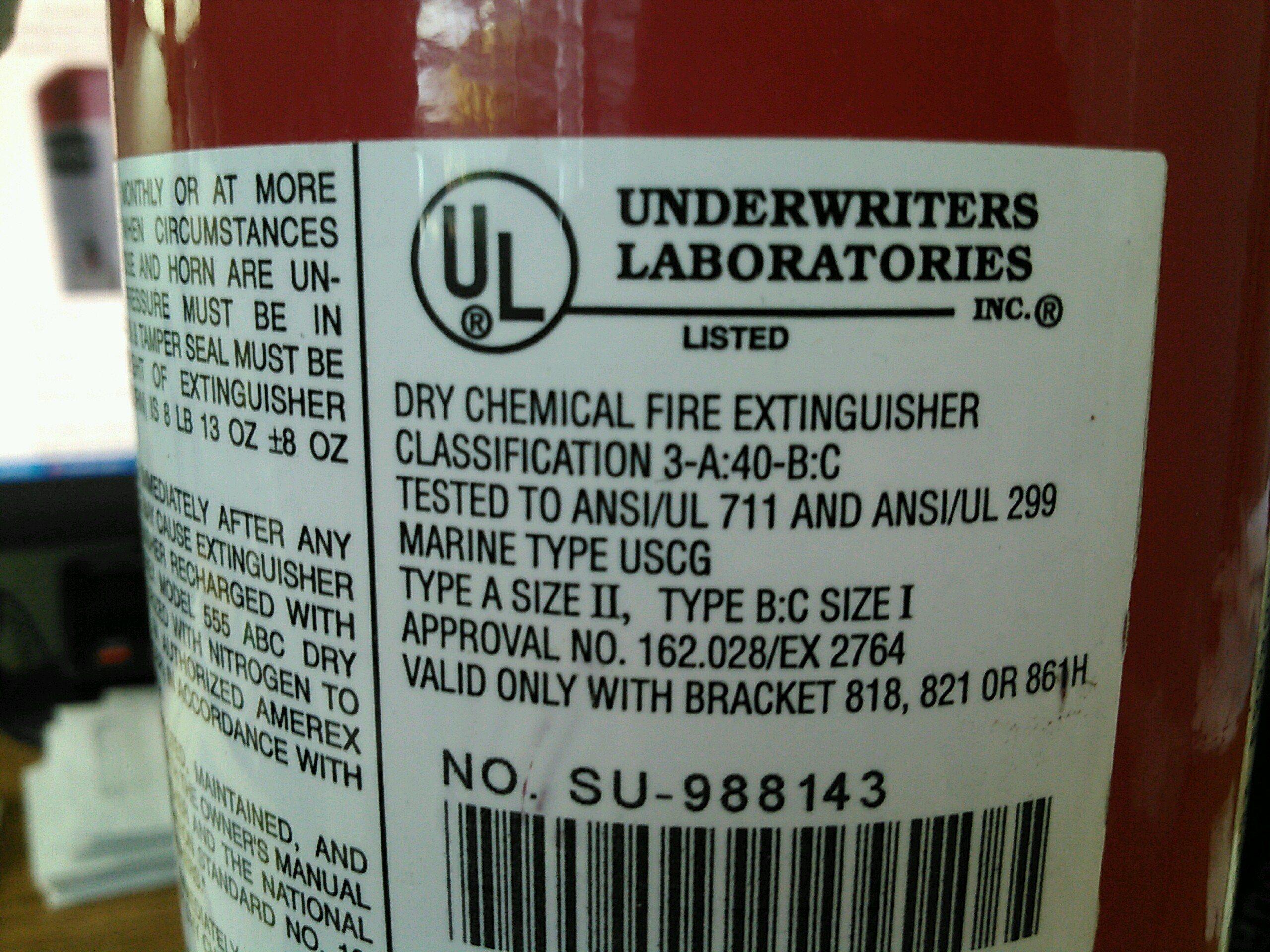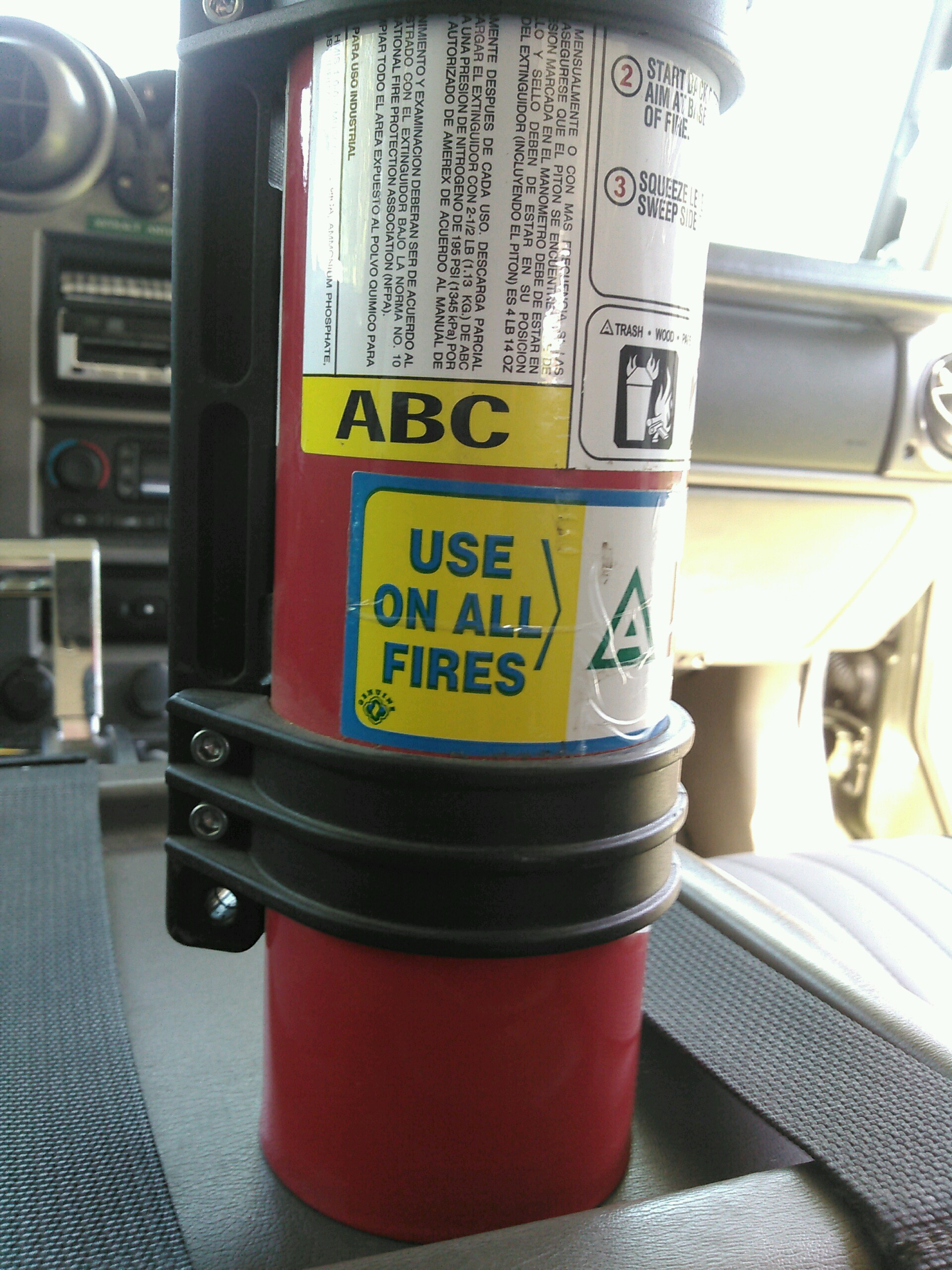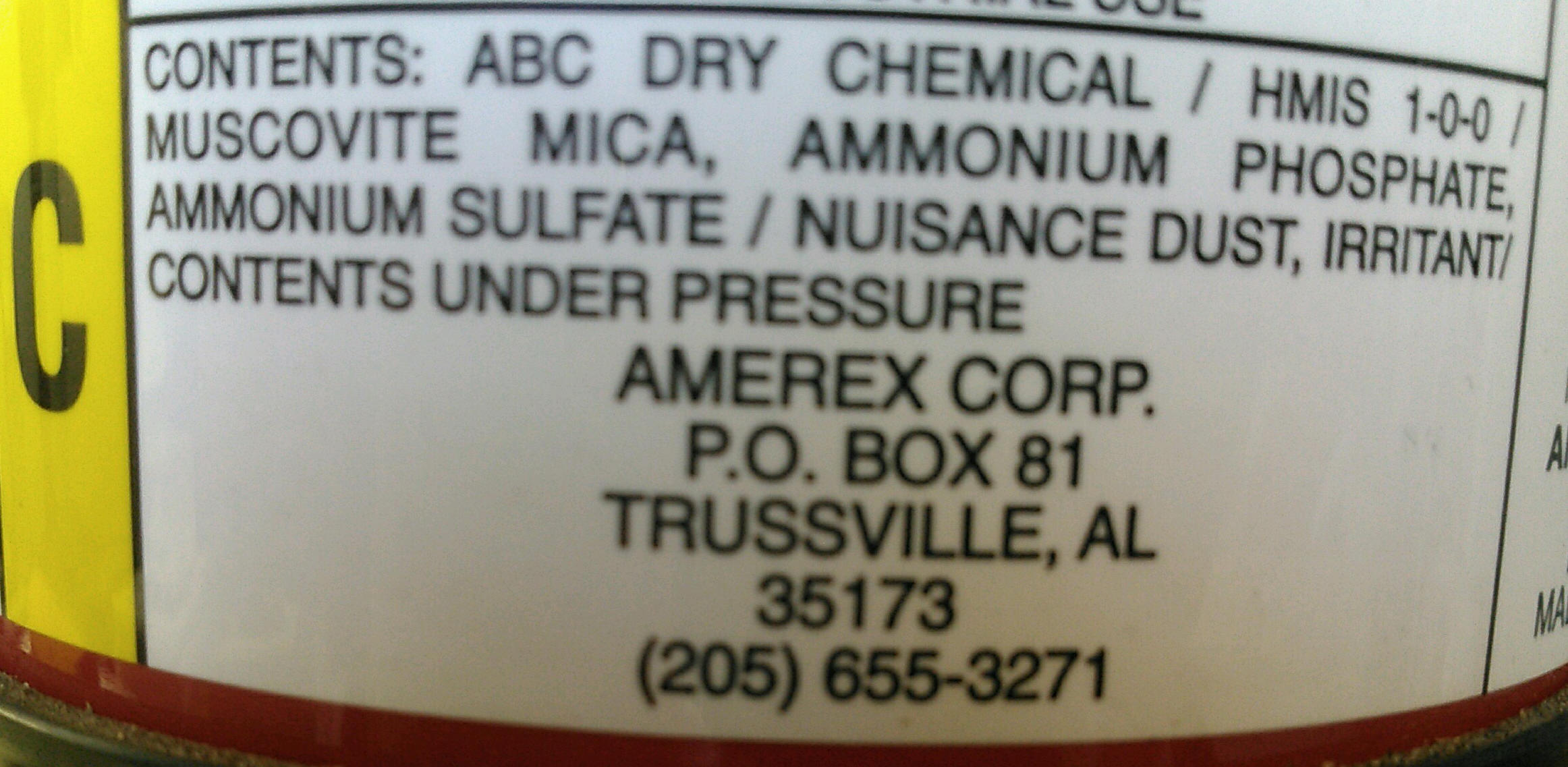FIRE EXTINGUISHING AGENTS AND PERFORMANCE COMPARISONS
IMPORTANT NOTE
The discussion here on this website, and on the net, are not intended to make recommendations on any particular type of fire extinguisher, but solely to offer information which should be incorporated into your research and education regarding the type of FE you need. Also beware that certain types of FEs must be accompanied by some form of training, or at least a sufficient familiarization of the risks associated therewith. In other words, do your homework.
For the average consumer, and in particular for the off-roading crowd, there are a limited number of fire suppression agents that are available for vehicle use . Obviously, our fire extinguishers must be portable, easy to handle, relatively small, and readily available. For these reasons, our net will not cover large scale industrial agents, such as certain inert gasses, like argon. We will also not deal with large scale fire suppression systems, such as you may find in industrial and commercial settings.
For these reasons, we will focus on 4 basic types of suppression agents and their containers, all of which are suitable for the types of fires that are foreseeable. There is an additional 5th FE that we will examine in greater detail on the net, but you can get a preview by checking out post #3, above. Finding the right type and size of fire extinguishers then will be our goal. These 4 suppression agents are:
1. Dry chemical
2. CO2
3. Halon
4. Halotron
Remember, this is an open net, and if you have a particular agent of which you are aware, or use, post up.
We will discuss the pros and cons of each of these 4 agents and make our recommendations. The process of selecting the right FE needs to take into consideration the specs for each. But first..............
1. QUICK PRIMER ON FIRE EXTINGUISHER DESIGNATIONS
Most fire extinguishers have a UL classification system that uses both letters and numbers. The letters represent the type of fire on which the FE can be used, as follows:
a. A for ORDINARY COMBUSTIBLES: wood, paper, rubber, fabrics and many plastics
b. B for FLAMMABLE LIQUIDS & GASES: gasoline, oils, paint, lacquer and tar
c. C for FIRES INVOLVING LIVE ELECTRICAL EQUIPMENT
d. D for CLASS D COMBUSTIBLE METALS OR COMBUSTIBLE METAL ALLOYS
e. K for CLASS K FIRES IN COOKING APPLIANCES THAT INVOLVE COMBUSTIBLE COOKING MEDIA vegetable or animal oils and fats
In connection with these letter designations, there are numbers that express effectiveness. For example, a 1A designation means that the FE is rated for class A fires and will dispense the equivalent of 1.25 gallons of water. A 2A designation means that the FE is rated for class A fires, but dispenses the equivalent of 2.5 gallons of water, and so on..
The effectiveness of class B FEs is measured by square footage. For example, a 10-B rating would mean the the FE is capable of handling a 10 square foot fire.
Only class A and B fires have this numerical designation.
2. WHAT TO LOOK FOR
UL has established commonly accepted standards for FE performance, and your fire extinguisher should contain this information on the label. If it doesn't, you should think twice about buying it or keeping it. At the very least, find out why it was not on the label. Sometimes the UL information is a little difficult to find, but it should be there, like this:

- UL Certification.jpg (953.24 KiB) Viewed 853 times
In addition, there are other indicators on the FE that will tell you the types of fire for which it is suitable. While not a substitute for the UL certification, it can be helpful, especially when determining which FE to grab for different types of fire. Something like this:

- ABC Designation.jpg (922.28 KiB) Viewed 853 times
3. BENEFITS AND DISADVANTAGES OF THE DIFFERENT TYPES OF FIRE SUPPRESSION AGENTS
There is not one agent that is perfect for all applications. Some have broader or more specialized uses, but with this advantage comes some risks, all of which you should be aware. Do your homework!!!
- A. Dry Chemical FEs
Dry chemical agents are probably the most commonly used in FEs, and for good reasons. Most are suitable for all (or most types) of fires, they are relatively inexpensive, more effective in windy environments, effective as a fire extinguishing agent, and available just about anywhere FEs are sold. All that makes for a well rounded FE that should be in every vehicle and home.
But beware!!! There are two concerns that should be an important part of your FE decision choices:
- Extremely messy and difficult to clean-up
Here is why:

- Dry Chemical Contents.jpg (304.49 KiB) Viewed 851 times
- B. Halon and Halitron FEs
Advantages of Halon
- 1. The most effective fire extinguishing agent
- 2. Halon and it's substitute, Halitron, are generally considered to be "clean fire extinguishing agents." The National Fire Protection Association defines, a "Clean Agent" as "an electrically non-conducting, volatile, or gaseous fire extinguishant that does not leave a residue upon evaporation." This is clearly an advantage when it must be used on or near sensitive equipment.
- Very low concentrations of Halon are required to be effective
Disadvantages of Halon and Halitron
- 2. Ineffective in windy environments
Here is what the H3R company has to say about Halon (https://www.h3rcleanagents.com/support_faq_2.htm#q6):
Halon is a liquefied, compressed gas that stops the spread of fire by chemically disrupting combustion. Halon 1211 (a liquid streaming agent) and Halon 1301 (a gaseous flooding agent) leave no residue and are remarkably safe for human exposure. Halon is rated for class "B" (flammable liquids) and "C" (electrical fires), but it is also effective on class "A" (common combustibles) fires. Halon 1211 and Halon 1301 are low-toxicity, chemically stable compounds that, as long as they remain contained in cylinders, are easily recyclable.
And, this (https://www.h3rcleanagents.com/support_faq_2.htm#q6):
A key benefit of Halon, as a clean agent, is its ability to extinguish fire without the production of residues that could damage the assets being protected. Halon has been used for fire and explosion protection throughout the 20th century, and remains an integral part of the safety plans in many of today's manufacturing, electronic and aviation companies. Halon protects computer and communication rooms throughout the electronics industry; it has numerous military applications on ships, aircraft and tanks and helps ensure safety on all commercial aircraft.
- C. CO2 FEs
In this writers experience and opinion, CO2 FEs are not nearly as popular as either dry chemical, Halon or Halitron. That is not to say that they are not effective for fire fighting purposes, because they are. Keeping in mind however, that this net is primarily centered around FEs that are suitable for the vehicle dependent 4WD off-road crowd, our focus on CO2 FEs will take this into account.
These FEs rely on carbon dioxide (CO2) to fight fire and they are considered "clean agents. Carbon dioxide is the same stuff that compromises the air we breath, the percentage of which is shrouded by the mania that surrounds the climate change debate. It's is also the stuff that is emitted, in gargantuan quantities, by volcanoes and other naturally occurring events. But despite all this, CO2 does offer an effective addition to the market of available FEs for the 4WD crowd..
Advantages
- A non-conductor, so can be used on live electrical equipment.
- Leaves no residue and is not as damaging to electrical equipment as powder.
- An effective fire fighting agent
Disadvantages
- dangerous and potentially lethal in confined spaces or areas lacking good ventilation, as it dilutes oxygen content. Training and education of these risks must occur
- Limited cooling properties and no protection against reigniting.
- A non-insulated horn can cause frost burn if user accidentally touches the horn when in use.
- Not particularly effective on CLass A fires as the CO2 dissipates quickly and re-ignition is more likely
4. SOME USEFUL LINKS
- 3. Amerex is one of the most well known and largest manufacturers of fire extinguishers. They offer a full range of fire extinguishers that can be found here: http://amerex-fire.com/products/